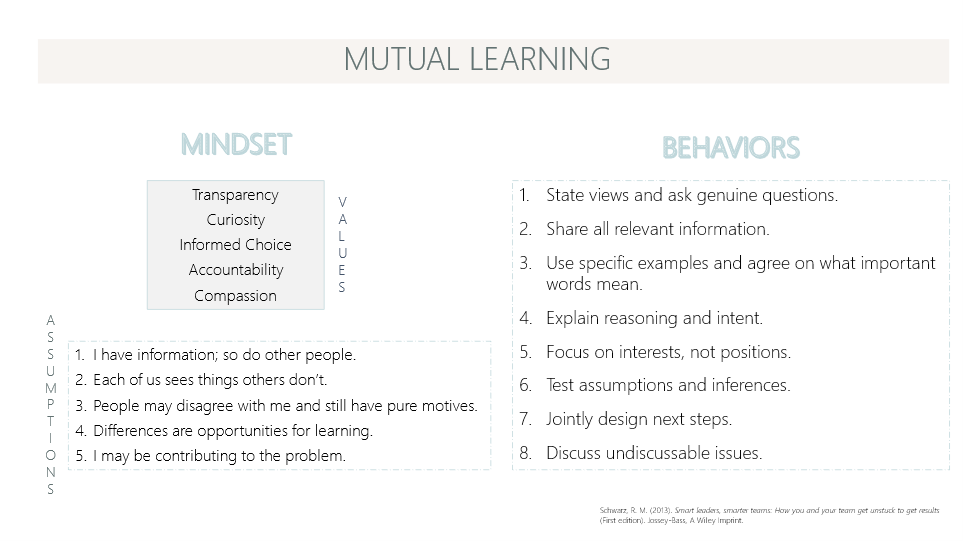Mutual Learning: The Foundation of Smarter Teams
Roger Schwartz’s Mutual Learning framework has become my most used and recommended frameworks for working with others in both my professional and personal life. Many leadership struggles boil down to the same fundamental issue, how we communicate and collaborate. This framework provides a practical approach to building trust and working effectively.
In my years working with high-potential leaders’ communication, the key in getting mutual learning to work for you is adopting the mindset of the framework, and the behaviors will follow.
After you read the behaviors, you might think “yeah, these are pretty common sense”, OR “well, it’s situational when I need to do that”. Either way you react, after testing yourself on whether you actually do these at work or not you might be surprised how much intentionality and patience it can require.
At its core, Mutual Learning leadership is about curiosity and collaboration. Instead of jumping to conclusions or pushing your perspective, you model openness by asking questions like, “What’s your thinking behind that?” and sharing your own reasoning transparently. You also create space for opposing views, showing your team that differing ideas are valuable, not something to avoid. When you make decisions, you aim to involve others, building trust and alignment in the process.
behavior #7: jointly designing next steps
Think of the last meeting you ran. At the end of the meeting, did everyone agree on what the action items were and who should take them? Or, did you (or someone else on the team) tell others what their actions are and when they will be completed?
A simple, “how long do you need to complete this?” could go a long way with your team members, boosting empowerment and autonomy over their workload. We can see the values of mutual learning at play:
Encourages transparency from your direct report (or peer) to tell you how full their plate is,
Your question demonstrates curiosity,
You provide your direct report with an informed choice and trust that they know their workload and capacity best.
Their response will let you know what to hold them accountable to, and
Hopefully, you allow for compassion when they describe their current workload and priorities if it does not initially meet your expectations.
Shifting to a Mutual Learning approach can feel awkward at first, especially if you’re used to being the decision-maker. A common barrier is the fear of losing authority, but involving your team in decisions doesn’t mean giving up control—it builds trust and stronger outcomes.
Another challenge is overcoming team resistance, especially if they’re used to a more directive style. Start small by modeling curiosity, like asking, “What assumptions are we making?” This opens the door for honest conversations and sets the tone for collaboration.
Curious about how apply mutual learning in your unique situation? Let’s explore it together—click below to schedule your free consultation!

